Paul Chazot
Machine Learning-based Biological Ageing Estimation Technologies: A Survey
Jun 25, 2022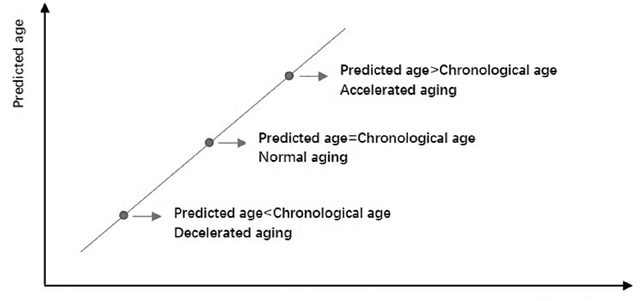

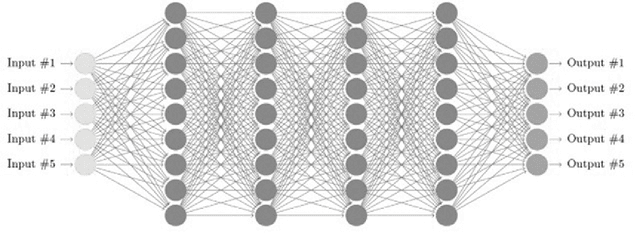

Abstract:In recent years, there are various methods of estimating Biological Age (BA) have been developed. Especially with the development of machine learning (ML), there are more and more types of BA predictions, and the accuracy has been greatly improved. The models for the estimation of BA play an important role in monitoring healthy aging, and could provide new tools to detect health status in the general population and give warnings to sub-healthy people. We will mainly review three age prediction methods by using ML. They are based on blood biomarkers, facial images, and structural neuroimaging features. For now, the model using blood biomarkers is the simplest, most direct, and most accurate method. The face image method is affected by various aspects such as race, environment, etc., the prediction accuracy is not very good, which cannot make a great contribution to the medical field. In summary, we are here to track the way forward in the era of big data for us and other potential general populations and show ways to leverage the vast amounts of data available today.
* in Recent Advances in AI-enabled Automated Medical Diagnosis https://www.routledge.com/Recent-Advances-in-AI-enabled-Automated-Medical-Diagnosis/Jiang-Crookes-Wei-Zhang-Chazot/p/book/9781032008431
Private Facial Diagnosis as an Edge Service for Parkinson's DBS Treatment Valuation
May 16, 2021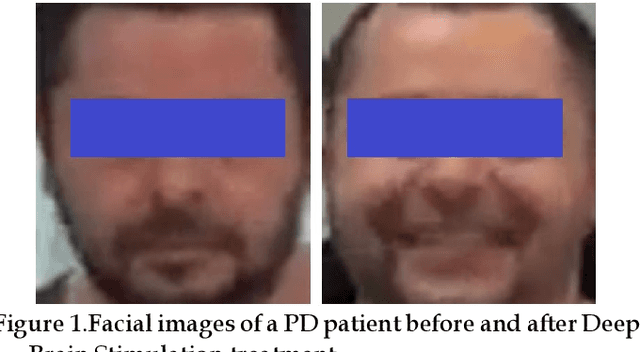
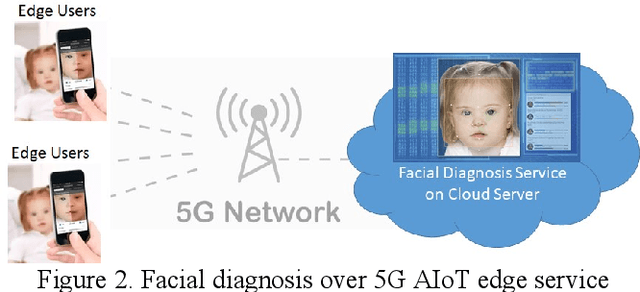
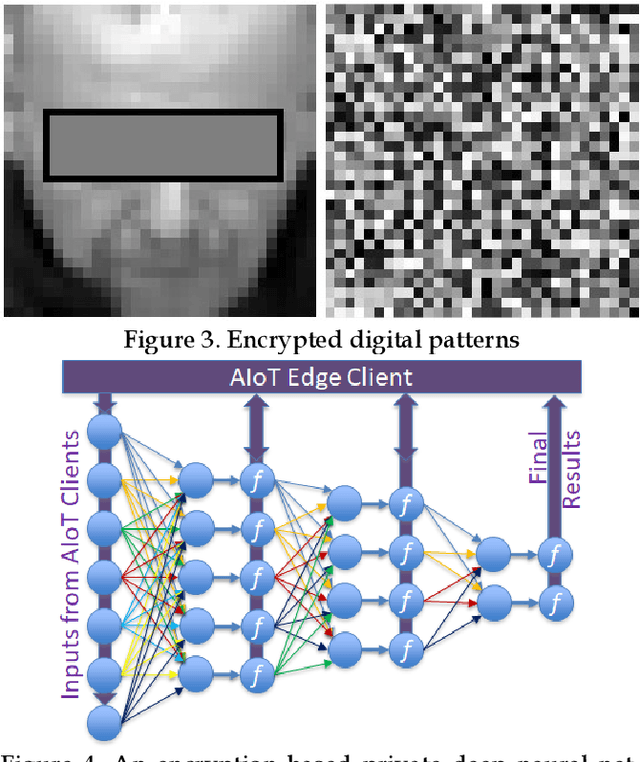

Abstract:Facial phenotyping has recently been successfully exploited for medical diagnosis as a novel way to diagnose a range of diseases, where facial biometrics has been revealed to have rich links to underlying genetic or medical causes. In this paper, taking Parkinson's Diseases (PD) as a case study, we proposed an Artificial-Intelligence-of-Things (AIoT) edge-oriented privacy-preserving facial diagnosis framework to analyze the treatment of Deep Brain Stimulation (DBS) on PD patients. In the proposed framework, a new edge-based information theoretically secure framework is proposed to implement private deep facial diagnosis as a service over a privacy-preserving AIoT-oriented multi-party communication scheme, where partial homomorphic encryption (PHE) is leveraged to enable privacy-preserving deep facial diagnosis directly on encrypted facial patterns. In our experiments with a collected facial dataset from PD patients, for the first time, we demonstrated that facial patterns could be used to valuate the improvement of PD patients undergoing DBS treatment. We further implemented a privacy-preserving deep facial diagnosis framework that can achieve the same accuracy as the non-encrypted one, showing the potential of our privacy-preserving facial diagnosis as an trustworthy edge service for grading the severity of PD in patients.
Computer-Aided Automated Detection of Gene-Controlled Social Actions of Drosophila
Sep 11, 2019

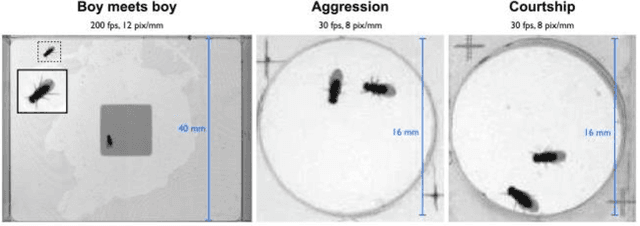
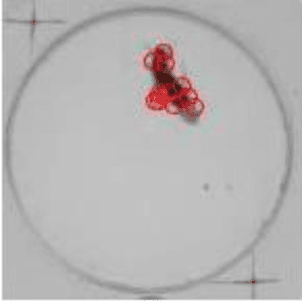
Abstract:Gene expression of social actions in Drosophilae has been attracting wide interest from biologists, medical scientists and psychologists. Gene-edited Drosophilae have been used as a test platform for experimental investigation. For example, Parkinson's genes can be embedded into a group of newly bred Drosophilae for research purpose. However, human observation of numerous tiny Drosophilae for a long term is an arduous work, and the dependence on human's acute perception is highly unreliable. As a result, an automated system of social action detection using machine learning has been highly demanded. In this study, we propose to automate the detection and classification of two innate aggressive actions demonstrated by Drosophilae. Robust keypoint detection is achieved using selective spatio-temporal interest points (sSTIP) which are then described using the 3D Scale Invariant Feature Transform (3D-SIFT) descriptors. Dimensionality reduction is performed using Spectral Regression Kernel Discriminant Analysis (SR-KDA) and classification is done using the nearest centre rule. The classification accuracy shown demonstrates the feasibility of the proposed system.
* published on International Conference on Smart Cities at Cambridge 2018
 Add to Chrome
Add to Chrome Add to Firefox
Add to Firefox Add to Edge
Add to Edge